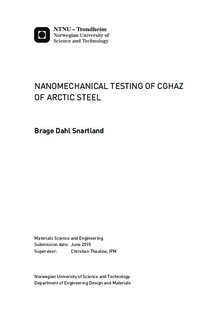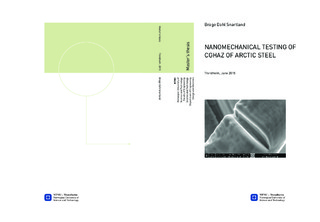| dc.description.abstract | An ever increasing demand for energy is forcing the oil industry to push technology forward, as new oil rich fields are discovered further North. The Arctic offers a harsh, cold climate, leading to new challenges within the field of materials technology. Offshore and onshore Arctic production demand strong, and tough materials, able to withstand temperatures down to -60 degrees celsius, in addition to extreme weather. As the temperature drops the risk for brittle material failure will increase. Understanding material deformation and governing mechanisms under such conditions can prevent material failure, while maintaining cost-efficiency.
Application of nanomechanical testing methods has become increasingly important within materials research. Understanding material properties at the micro- and nano-level, has attracted significant interest. Most small-scale experiments have been conducted at room temperature, as this requires a less complex set-up. However, testing of Arctic steels requires low temperature small-scale experiments to obtain material performance in its field of operation.
The scope of this thesis was to modify existing cryogenic experimental equipment. Characterization of regions in a weld simulated zone of a steel developed for use under Arctic conditions, was to be conducted. Additionally, establishing nanomechanical properties was desired. The approach was to machine micro-sized cantilevers and pillars, using a focused ion beam. The specimens were loaded, and compressed, at room temperature, and at approximately -80 degrees celsius. The in-house made and modified cryogenic set-up enabled highly accurate low temperature nanomechanical testing. A nanoindenter was utilized to map the hardness at the micro-level, obtaining the variations of hardness in the microstructure.
This thesis yielded interesting results regarding hardness, nanomechanical material properties and testing methods. However, pushing the equipment beyond its specifications resulted in experimental data requiring compensation for several unforeseen effects. The critical stress intensity factors were calculated through the J-integral for both pure iron and steel cantilevers. Pillar compression to obtain the microstructure yield strength, was also conducted, all contributing to the characterization of the microstructure and nanomechanical properties of the steel. | |

